Nutrition of orchids in nature
Orchids mostly grow as epiphytes in a variety of locations. They have adapted to both the humid conditions in the cloud forests and the dry locations of the coastal forests of the Caribbean. At first glance, it is not clear how these orchids are fed.
Rainforest – life in abundance?
Anyone who has ever visited a tropical rainforest automatically thinks of lots of sun, high humidity and frequent rainfall.

This is the basis for photosynthesis. The chlorophyll of the leaves produces sugar and oxygen from light energy, water and carbon dioxide.
Oxygen is released into the environment through the stomata of the leaves. The sugar is converted into starch, carbohydrates or cellulose and is used for plant growth. Parts are used up again when the plants respire, sugar and carbohydrates are burned with oxygen and carbon dioxide is produced.
Due to the high amount of light in the tropics, photosynthesis produces sugar in abundance. Parts of it are excreted via the roots and also via the leaves (guttation).
Lush vegetation on barren soil
The heavy rainfall erodes the soil, washes out almost all soil nutrients and transports them to the sea via the big rivers. These conditions force the rainforest to use the nutrients sparingly and to secure their share. The organic material then released must be made available again to the vegetation by microorganisms.
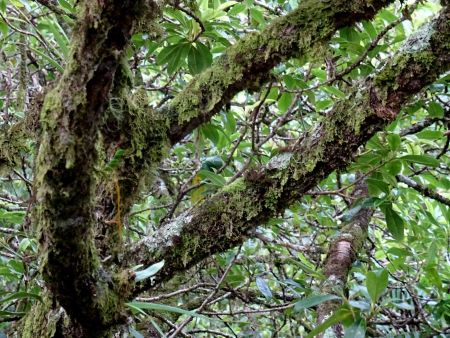
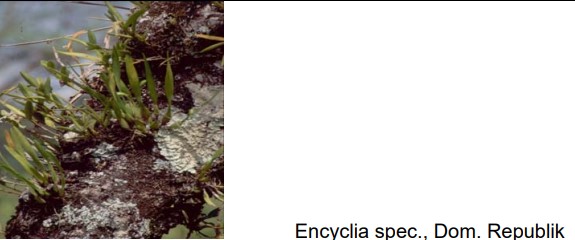
The nutrient cycle of the rainforest
The rainforest is largely independent of nutrients from the soil. The plants themselves, especially the trees, have developed into nutrient stores. Many of the nutrients circulate in a closed loop. Falling leaves, dead animals and other dead organic substances are converted within a few days and return to the cycle. The main work is done by many microscopic fungi, which, along with bacteria and insects, decompose the organic material and make it available to the plant roots again.
The fine hairy roots of the trees grow into this temporary layer of humus and immediately absorb the free nutrients. Most trees in the rainforest can only survive because their root systems have entered into a symbiosis, called mycorrhiza, with fungi. The mycorrhizal fungi provide food and receive carbohydrates from the tree in return.
Fungal threads attach themselves to the fine terminal branches of the roots (= inner (endotrophic) mycorrhiza) and take on the absorption of water and nutrients to a large extent.
The better the fungus works, the better the tree thrives and can give up excess carbohydrates (sugars) to the fungus.
Despite this optimal nutrient filter, small amounts of nutrients are washed out by the plentiful rainfall.
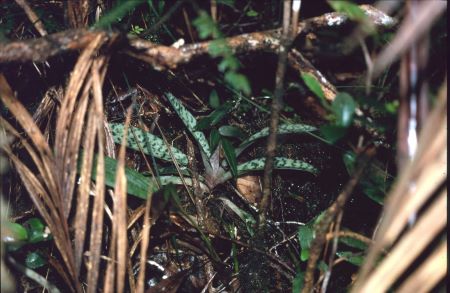
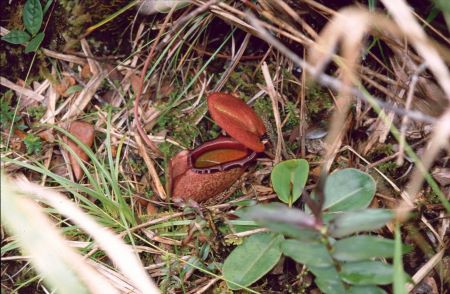
Nutrients from the air
The forest does not lack the prerequisites and basic materials for growth (light, heat, water, carbon dioxide), but rather the substances for the production of protein and genetic material.
The trade winds carry 500 million tons of Saharan dust west across the Atlantic every year onto the American rainforests.
The situation is similar in Asia. From the fine dust, 12.6 kg of potassium, 2.7 kg of phosphate, 2.6 kg of magnesium and up to 16 kg of calcium are precipitated per hectare of rainforest (= 1.26 mg K per m³). When it rains, these minerals are dissolved and used by plants for the synthesis of proteins, substances essential for body growth and reproduction.
The missing nitrogen is made available by the frequent thunderstorms in the order of 10 kg. During lightning, the nitrogen in the air burns to form nitrogen oxides, which react with the water content of the air to form nitrites and nitrates.
It is also known that certain algae in cooperation with fungi, are able to produce proteins which then take over the supply of nitrogen.
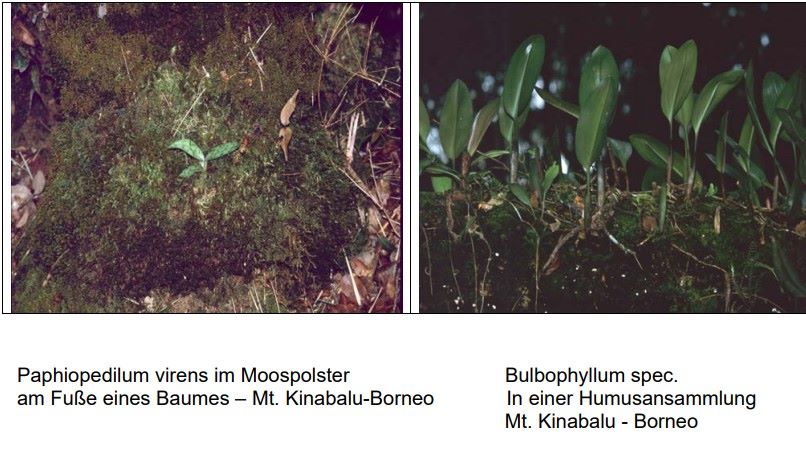
The Life of the Epiphytes
Light, the energy supplier for all plants, only reaches the ground in a few places in the tropical rain forest. It is therefore not surprising that some plants, e.g. the epiphytes, grow directly up in the treetops. But the fight for sunlight is not the only reason for colonizing lofty heights. It is the constant supply of nutrients to the plants that the abundant rain brings with it.
Every downpour sweeps the finest dust out of the air, dissolves the ions it contains and represents a permanently weak fertilizer solution. The sources of this dust are the desert sand carried by the trade winds but also volcanic eruptions and, more recently, ash from forest fires.
The epiphytes have adapted to this permanently flowing weak fertilizer solution.
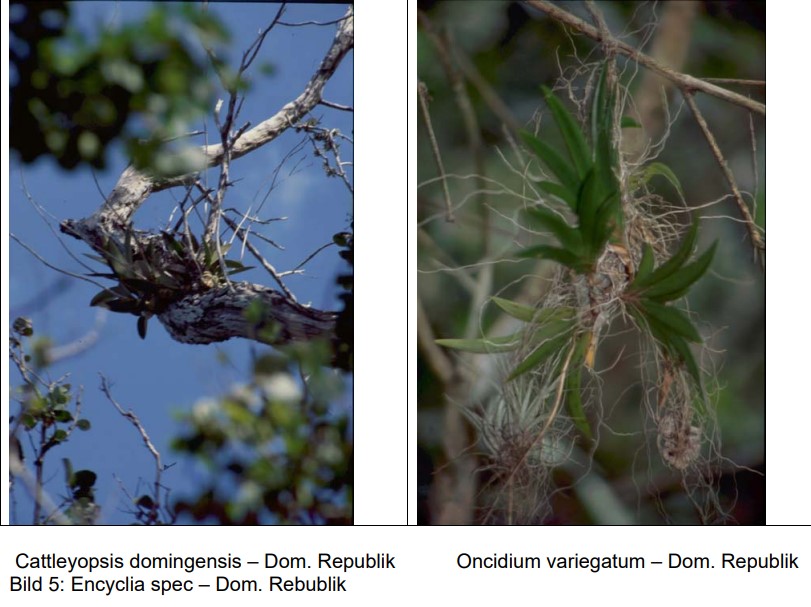
Bromeliads collect the rainwater in specially provided water cisterns. This is also referred to as reverse hydroponics since the nutrient reservoir is above the plants. Tillandsia can absorb water and nutrients from the air with the whole plant via certain scales.
Ferns, on the other hand, form collecting funnels for sludge with their leaves, which the microorganisms convert into plant food within a very short time.
Orchids can use their aerial roots to extract additional moisture from the air in order to cover their nutrient requirements.
If there are too many epiphytes on a tree, it can be damaged by starvation or lack of light. A few years ago, I visited an orange orchard in the Dominican Republic. Lots of torn tillandsias and orchids like Onc lay under the fruit trees: Variegatum, Ionopsis panaticulata, Encyclica etc...
I tried to convince the owner with my hands and feet that epiphytes are not parasites. He just led me to an orange tree to show me the contrary. The left half of the tree was cleared of epiphytes and full of blossoms and oranges. The right side was full of tillandias and orchids, but there were hardly any flowers or fruit. If I hadn't seen it with my own eyes - I wouldn't have believed it.

Orchid blossom - luxury ?
Epiphytes have therefore adjusted to an extremely low supply of nutrient salts. A little too much nutrients in the culture can quickly become a burden. That's why it often takes years for the young orchid plants to collect enough reserves to bloom.
The magnificent flower is not a superfluous luxury but is a search image for insects with nectar as a reward.
Here, too, the orchids are very careful to preserve the species with only two pollen, which are attached to the insects. As a result, after months of maturing, there are then millions of dusty seeds without their own nutritive tissue. For germination, these seeds are again dependent on the help of fungi.
daily rains
Nevertheless, it appears to be a successful strategy since the combined mass of epiphytes on trees in tropical rainforests is more than twice the leaf mass of the trees.
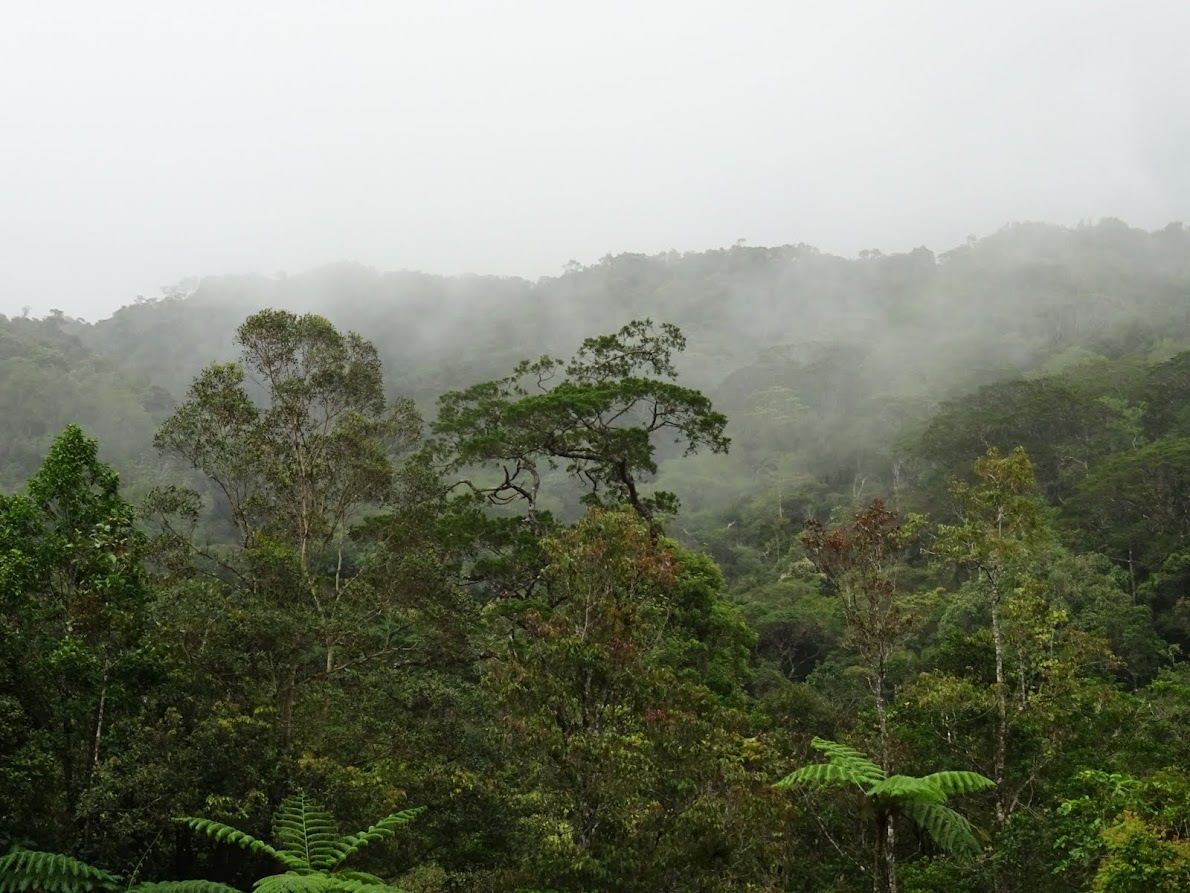
The higher the amount of precipitation, the higher the number of these plants and the greater the variety of species. Especially on the weather side of the mountain flanks, where it sometimes rains daily, the diversity of species is hard to imagine. At times it can rain up to 20 liters / sqm a day. On the rainy flanks of Mt. Kinabalu on Borneo, for example, there is a far greater number of epiphytes than in the flat rainforests of Kalimantan.
Another variant of nutrient production (nitrogen) has established itself there: pitcher plants. The pitchers of these plants collect insects, which are converted into plant food by microorganisms. If there are more nutrients in the soil, e.g. volcanic rock, these plants become rarer. The frequent co-occurrence of pitcher plants with Paphiopedilum leads to the conclusion that lady's slippers only grow on nutrient-poor (low-nitrogen?) soils.
On some islands, orchids grow in close proximity to the sea. I have already seen Paphiopedilum niveum and godefroye, coelogynes, dendrobiums and others growing 1 meter above the sea water.
During storms, these plants are sprayed directly with sea water or spray. Seawater has a salinity of 50,000 µS ! Average analyzes of seawater in the tropics contain the following components:
10 700 mg sodium,
1300 mg magnesium,
410 mg calcium,
400 mg of potassium
and over 80 trace elements (per liter of seawater)
When you consider that huge masses of water evaporate over the sea and are transported to the mainland as rain, it is striking that this weak fertilizer solution contains a different composition than our commercially available mineral fertilizers.
Orchids as epiphytes
Orchids can basically be divided into two groups of epiphytes:
Orchid plants live epiphytically without their roots being able to use a humus accumulation as water and nutrient reservoirs.
They are then dependent on regular rainfall. Night dew is more important than rain because they are specifically prepared to absorb and store the dew.
The so-called Velamen not only protects the root but can also introduce water with the nutrients it contains and store it for a short time.
It evaporates on the coast, near bodies of water or on mountain slopes sun during the day the water. When the air cools down again in the evening and at night, the moist, water-saturated air condenses. Dew first forms on the plants, which can then turn into fog. Many epiphytes grow in such cloud forests, which are so independent of the get water all year round in the rainy season.
Orchid plants are epiphytic but can grow part of their roots into a water-storing humus accumulation
They become independent of regular rainfall because they can bridge certain dry periods. The roots can extract mineral salts from the rotting humus along with the water.
This variant also applies to Paphiopedilum and the ones, which do not grow epiphytically.
The insulating velamen (see above) regresses as soon as the root penetrates a substrate grows into. This allows them to absorb water and nutrient salts more directly but react sensitively to unfavorable conditions, e.g. high salt concentrations. If a tolerance limit is exceeded, roots die.
Notes for culture
This amazing adaptation of orchids to the respective site conditions allow the plants to survive in culture in the first place. Several times attempts have been made to copy the location conditions of orchids, by tying up plants with different materials or planting them in different potting mixes. This makes orchid culture extremely difficult, as attached plants have higher moisture requirements than the potted plants. Attempts to cultivate orchids using only rainwater have failed. If you use mineral fertilizers, salt deposits can accumulate on the plants or in the plant material with the frequent watering (watering and spraying). Then the orchids are to be watered with pure rainwater or something similar.
In recent years I have tried to cultivate orchids using organic fertilizers such as plant and animal manure, rock dust and others, following nature's example to nourish plants.
Successes and failures alternated regularly.
Today, it is known that organic fertilizers are only destroyed by bacteria, fungi and microbes etc. They must be converted into plant-available food. Various substances such as amino acids and vitamins are produced in the process, which are important for growth and internal plant protection. It has been scientifically proven that, in addition to mineral substances, plants can also absorb these organic substances processed by microbes or even microbes can be absorbed through the roots.
In the orchid culture the necessary nutrients of the plant are supplied with mineral fertilizers and supplemented with organic substances. There have been many reports about the level of fertilizer application, everyone seems to have and guard their own recipe.
Irrespective of this, the orchids in their natural state show us what magnificent specimens they can grow into.


